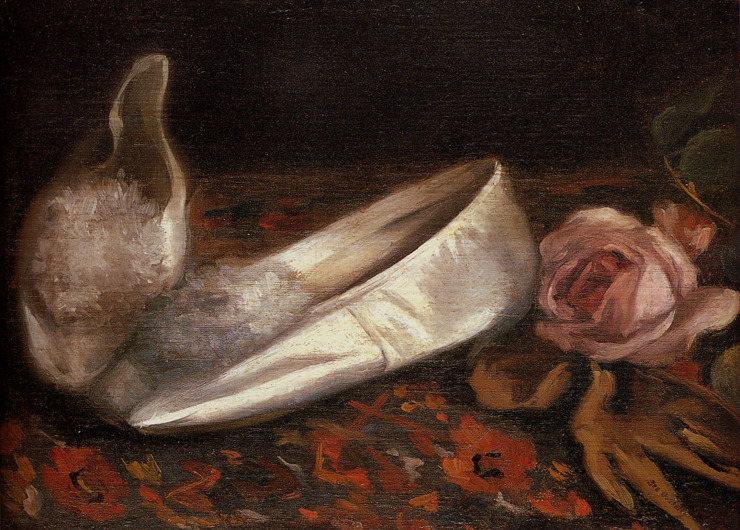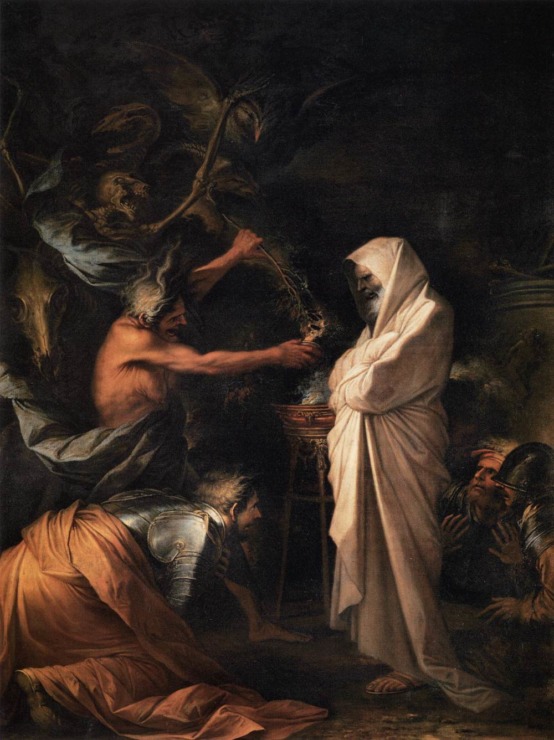The Cloak, the Boot, and the Shoes
“What do you make so fair and bright?”
“I make the cloak of Sorrow:
“O, lovely to see in all men’s sight
“Shall be the cloak of Sorrow,
“In all men’s sight.”
“What do you build with sails for flight?”
“I build a boat for Sorrow,
“O, swift on the seas all day and night
“Saileth the rover Sorrow,
“All day and night.”
“What do you weave with wool so white?
“I weave the shoes of Sorrow,
“Soundless shall be the footfall light
“In all men’s ears of Sorrow,
“Sudden and light.”
-WB Yeats
Enjoy Artistic Representations of “The Cloak, the Boot, and the Shoes” by WB Yeats

Souliers blancs (White Shoes) by Eva Gonzalès, 1879-1880.

The Shade of Samuel Appears to Saul by Salvator Rosa, 1668.
Listen to this Reading of “The Cloak, the Boot, and the Shoes”
Listen to these Musical Interpretations of “The Cloak, the Boot, and the Shoes” by WB Yeats
About W.B. Yeats
William Butler Yeats was born in 1865 in Dublin into a family of the Protestant Anglo-Irish landowning class. He lived in Dublin and London during his growing up years. He was very much affected by the politics of the time, as he was a young adult when the protestant minority in power began to be displaced by the predominantly Catholic nationalist movement.
Yeats studied law for a time but eventually moved to London to study art. He was an accomplished playwright, and a founder of the Irish Theatre which was later to become the Abbey Theatre. While he is better known for his poetry, Yeats was awarded the Nobel Prize for Literature in 1923 more for his theatrical works than his verse. He was the first Irishman to be awarded the prize.
His first collection of poems was published in 1889, and there is strong evidence of the influence of Edmund Spenser and Percy Bysshe Shelley. Later, his poetry became more rooted in realism and the physical, with influence of Ezra Pound and William Blake apparent. Common themes in his poetry include mysticism, spiritualism, the occult and Irish identity and nationalism.
Yeats was appointed to the Irish senate in 1922. He was married, but had an ongoing relationship of sorts with a former love, Irish activist and revolutionary Maud Gonne. Known as one of the greatest poets of the 20th century, Yeats died in 1939.
That’s it for The Cloak, the Boot, and the Shoes!
BUY ‘HOW TO WRITE A FORM POEM’ NOW!
